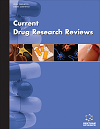
Full text loading...
We use cookies to track usage and preferences.I Understand
SGLT2 (Sodium-Glucose Co-transporter 2) inhibitors, also known as gliflozin class, are a novel family of oral drugs being used to treat type 2 diabetes. SGLT2 inhibitors can work alone or in conjunction with other medications. This class includes five drugs, including canagliflozin, ertugliflozin, sotagliflozin, dapagliflozin, and empagliflozin. SGLT2 inhibitors inhibit the SGLT2 cotransporter in the proximal tubules of the kidney, reducing glucose and sodium reabsorption. It promotes the elimination of sugar in urine (diabetes mellitus) and lowers blood sugar levels. SGLT2 inhibitors also have pleiotropic effects on cardiac and renal function, broadening their therapeutic applications in heart failure. Despite the clinical benefits, regulators have placed secondary warnings in product information since the medications first hit the market. SGLT2 inhibitors, in particular, have had a significant impact on a variety of risk factors. This can lead to hypoglycaemia, urinary tract infections, diabetic ketoacidosis, lower limb amputation, and fractures. Although some of these events are uncommon, they can lead to severe and deadly consequences; therefore, patients must be closely monitored. In general, SLGT2 inhibitors are an efficient diabetes treatment with strong cardiovascular and renal protection and a favourable safety overview. This review sought to summarise the safety overview of commercially available SGLT2 inhibitors.

Article metrics loading...

Full text loading...
References


Data & Media loading...

